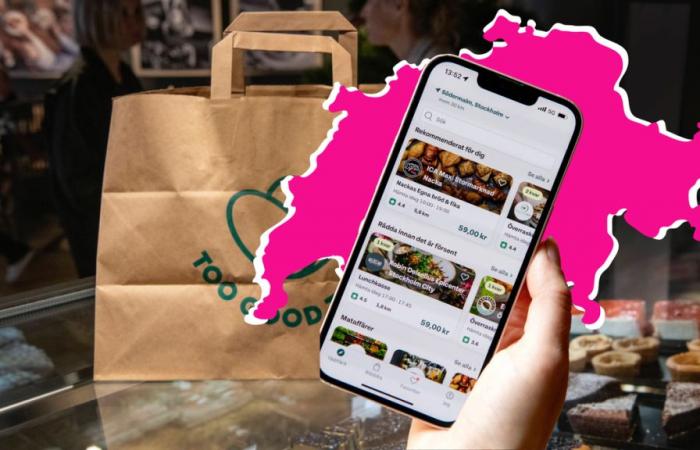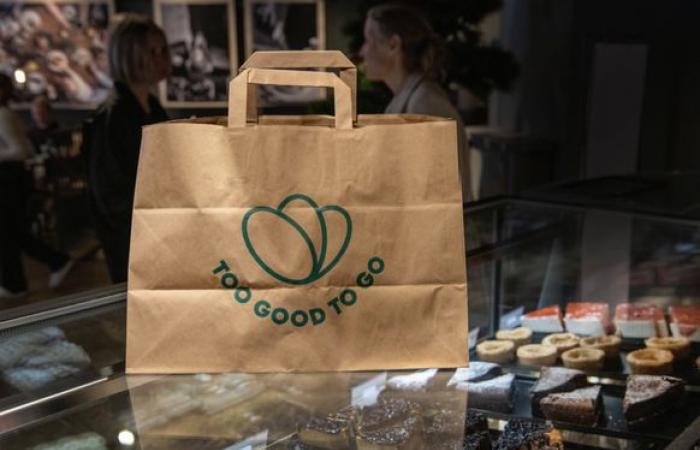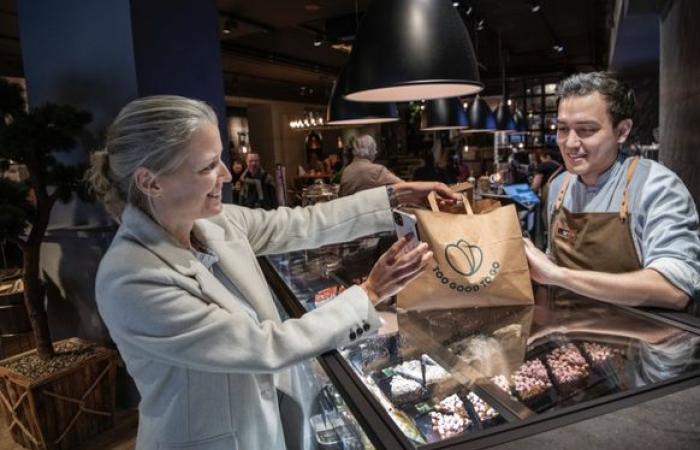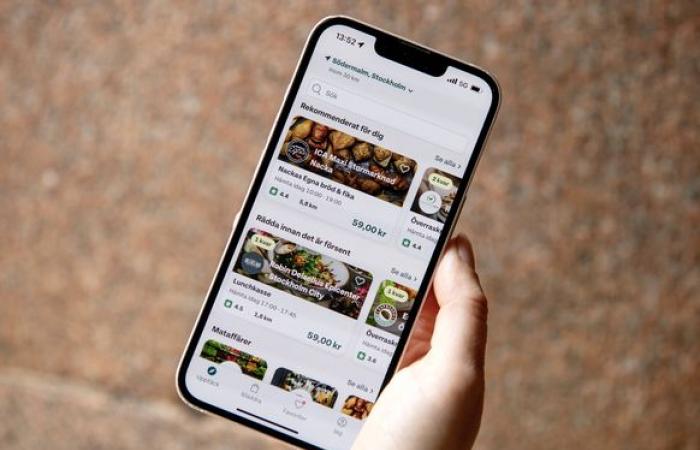In Switzerland, the Too Good To Go application is used by two million people. Image: imago
Mette Lykke runs Too Good To Go, the Danish company that fights against food waste. She tells us what works best in Switzerland – and how she intends to develop her business.
Benjamin Weinmann and Pascal Michel / ch media
In Switzerland, food waste is reaching alarming heights. Every day, sandwiches, apples and yogurts, still edible or slightly past their expiration date, are thrown away. According to the Foodwaste.ch association, a third of food is lost along the food chain, linking the fields to our refrigerator. This situation raises crucial questions about our management of food resources and the measures needed to reduce this waste.
Founded in 2015, the Danish company Too Good To Go’s mission is to combat food waste. Its innovative concept is based on an application allowing consumers to locate nearby businesses that sell their unsold items at a reduced price. The particularity lies in the fact that the contents of the bag remain a surprise, adding a touch of excitement to this ecological and economical approach.
Mette Lykke, CEO of Too Good To GoImage: dr
At the head of Too Good To Go since 2018, Mette Lykke, 42, runs a rapidly expanding company, present in 17 European countries and the United States. With 95 million registered members and 160,000 partner companies, the company continues to grow. In an exclusive interview, the CEO reveals her strategy and the future ambitions of this innovative initiative against food waste.
What was your last in-app purchase?
Mette Lykke: Last week I picked up a bag of pastries from a local organic bakery here in Copenhagen. I also often shop at the supermarket with our app, where I receive a basket full of fruits and vegetables.
And did you eat all the pastries or did some still end up in the trash?
I ate it all. And if I don’t want to finish, it’s very easy to store the pastries in the freezer.
Maybe it’s possible with pastries. But your customers don’t always know what they will receive in their basket. This is probably one of the drawbacks of the Too Good To Go concept.
No one can predict surpluses with precision. As a store owner, you don’t know what will be left at six in the evening, whether it will be a salmon sandwich or a portion of pasta. This is why a certain flexibility remains essential when composing packages.
But then, isn’t your application just shifting the problem of waste?
We have of course already asked ourselves this question and commissioned a university to analyze it to answer it.
“The study concluded that less than 10% of the contents of Too-Good-To-Go baskets end up in the trash”
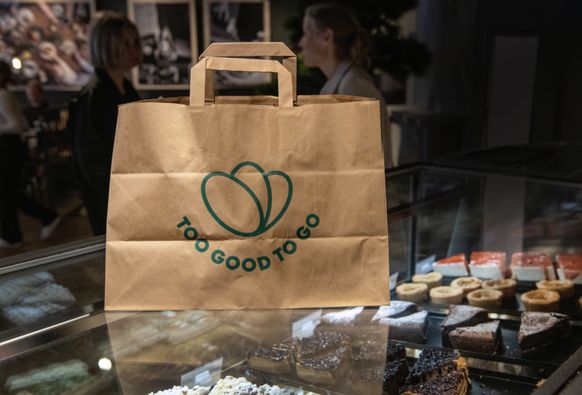
A Too Good To Go surprise basketImage: imago
Aren’t your customers just looking to get a good deal rather than achieving sustainable goals?
It’s probably a mixture of the two. For many people, sustainability is a key motivation. It makes no sense to throw away fresh food. But you’re right, getting a good deal is always appreciated. This was confirmed again recently with inflation.
Does this mean you are profiting from this inflation?
Demand for our baskets has certainly increased with inflation.
“The contents of our surprise baskets are on average 70% cheaper than the original price”
How does Switzerland differ from other markets in which you are present?
What stands out are the high prices. In food, Switzerland has higher prices than our other markets. Despite this, we do not observe large variations in consumer purchasing behavior.
How much do you earn on a ten franc basket, for example?
This remains confidential. But we only make a profit when the baskets are actually sold.
The fact is that you make a profit by selling these unsold items. You could simply donate them to charities who would distribute them to people in need.
Most of our partners only have the equivalent of two or three extra meals at the end of the day.
“From a purely logistical point of view, it would not be wise to cross the whole of Switzerland to collect merchandise from 7,500 stores”
Charities are therefore not an option in the majority of cases because the quantities are too small.
Supermarkets might be an exception.
Many supermarkets we work with sell products on Too Good To Go that could not be donated. For example, hot dishes. It would be difficult to ensure food safety when transporting such products.

Mette Lykke using the Too Good To Go appImage: imago
So how do you concretely contribute to reducing food waste?
Every second, 80,000 kilos of still pristine food end up in the trash. We save four kilos per second. Four kilos out of 80,000! We therefore continue to waste a lot.
“Our food system is extremely inefficient. This is why other solutions are necessary”
Supermarkets and food manufacturers tend to point the finger at consumers when it comes to food waste. Where do you think the industry’s responsibility lies?
Everyone needs to improve, from manufacturers to retailers to restaurateurs. The United Nations goal is to halve food waste by 2030. Many companies have committed to this goal. However, sales forecasting remains a major challenge. Artificial intelligence can certainly help, but it will never be able to tell a Swiss bakery how much it will sell on a rainy Tuesday.
Where is your app used the most? In supermarkets, restaurants or small shops?
It’s fairly well distributed, with a third for each of these categories.

The Too Good To Go appImage: imago
And who are your most popular partners in Switzerland?
The most popular baskets are those that can be reserved in supermarkets, notably the refined products from Manor and Globus, but also those from bakeries and sushi. In Switzerland, we work with well-known chains such as Starbucks, Pret A Manger, Coop, Migros, Alnatura, and more recently Denner. But also with hotels like Marriott and restaurants like Hitl and Tibits.
And how many members have you gained in Switzerland over the last two years?
In Switzerland, we have two million app users. Two years ago, there were still 1.5 million. The number of partners increased from 6,200 to 7,500. These are rather good figures considering the size of the country and the population. But of course we would like to do more.
Where do you still see growth potential in Switzerland?
A few months ago, we launched a new platform, specifically designed for merchants, so that they can better check fresh products that are approaching their expiration date. We are also considering offering this service in Switzerland. Thanks to artificial intelligence, we can also recommend the optimal discount to them.
And are you also considering international growth opportunities?
Currently, our main markets are France, the United Kingdom and Germany. In the future, the United States is expected to become a crucial market, simply because of its size.
Bakeries are rarer there than in Europe…
…Yes, but on the other hand, there are a lot of donut sales points! (Laughs.) In addition, we are going to launch in Australia again this year.
Has there ever been talk that private customers could also offer their leftovers on the app?
We’ve already thought about it, but it’s not our priority at the moment.
What about ease of use? Today, Too Good To Go customers must collect their basket within a 15 to 30 minute window, which is not always ideal.
We have regular discussions with our partners to see if they can extend the recovery period. However, many businesses are facing staff shortages and are looking to maximize their margins through regular sales.
“Financial balance remains their priority”
And a delivery service?
A delivery service is very expensive. This is why we are currently giving it up.
Your system excludes people who don’t have a smartphone. Will this continue?
Yes. We had a website for a while, but it didn’t work well. The app is the basis of our business model.
And when will it generate profits?
What I can tell you for now is that our turnover increased by 42% in 2023. And the activity will soon no longer be in deficit.
How to fight against food waste
- No unnecessary purchases: take a look in the refrigerator before going shopping.
- Plan purchases: establish a menu and a shopping list.
- Prioritize fresh products: favor fresh products purchased more often and in a more targeted manner. This is better than large weekly purchases that cannot then be consumed.
- Mobilize your senses: test expired products before throwing them away. Most of the time, products remain edible beyond the expiration date.
- Use tools to combat food waste: applications like Too Good to Go allow you to save food and consume it at a lower cost.
- Dispose of waste properly: do not dispose of food waste with wastewater. Extraction at the wastewater treatment plant requires additional energy.
source: wwf
The news in Switzerland is here
Show all articles
(French adaptation: Valentine Zenker)

